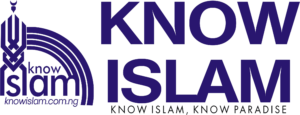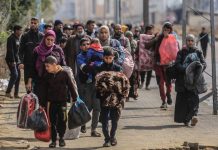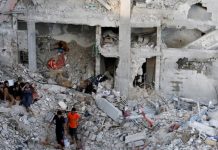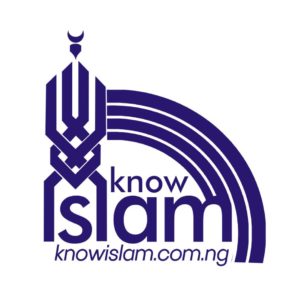Thousands attend noon prayers after two weeks of protests over Israeli-imposed restrictions on entering the compound.

Occupied East Jerusalem – Thousands of Palestinians attended noon prayers at al-Aqsa Mosque in occupied East Jerusalem on Saturday, following two weeks of protests over surveillance equipment and other obstacles to free movement at the entrances and gates of the compound.
The compound was opened to worshippers of all ages, a day after Israel temporarily restricted men under the age of 50 from entering the holy site.
“For Saturday, this is a high turnout, but al-Aqsa needs the support of all Muslims,” Nabil Dumeiri, a resident of occupied East Jerusalem, told Al Jazeera.
“We owe this to the people [Palestinians] of Jerusalem, to the field and to the supporters who came from nearby areas … the Israeli police have backed down and removed the metal gates in order to absorb the anger,” he added.
Dumeiri was referring to Israel’s decisions to remove newly installed surveillance cameras and metal detectors from the entrances of the compound.
The Israeli restrictions were implemented nearly two weeks earlier after three Palestinians, citizens of Israel, shot and killed two Israeli policemen outside the compound on July 14.
The Palestinians responsible for the attack were chased inside the compound and shot dead.
The compound was closed for two days and reopened with the addition of newly installed metal detectors, angering Palestinians who feared Israel was attempting to alter the status quo and take full control of the holy site.
READ MORE: Has Israel’s security apparatus failed?
Surveillance cameras were also eventually added to the gates of the holy site.
Palestinians vowed to protest and pray outside al-Aqsa until the metal detectors and other surveillance equipment were removed.
1,300 injured
Over the course of two weeks, Israeli forces often met protesters with rubber-coated steel bullets, tear gas, and stun grenades. In some areas, live rounds were also used, according to the Palestinian Red Crescent.
At least six Palestinians were killed during the two weeks of protests across occupied East Jerusalem, the West Bank and the Gaza Strip, and at least four were killed in alleged attacks on Israeli forces.
According to the Red Crescent, more than 1,300 Palestinians have been injured during demonstrations since July 14.
Nearly 500 of the injuries took place in East Jerusalem alone.
Three Israeli settlers were killed last Friday when a 20-year-old Palestinian assailant jumped the fence of the Halamish settlement in the occupied West Bank and stabbed four members of a family.
Many of the Palestinian injuries took place last Thursday when religious leaders announced that worshippers should re-enter the al-Aqsa compound.
 |
| More than 1,300 Palestinians have been injured since the protests began on July 14. [Amir Cohen/Reuters] |
Ahmad Abu Saloum, a Palestinian artist from occupied East Jerusalem, was in Baba al-Huta – a neighbourhood in the Muslim quarter of Jerusalem’s old city – when he spotted a woman with her child on the ground.
Abu Saloum said that moments earlier, Israeli police fired stun grenades of people who crowded at the Baba Huta entrance, trying to get into the al-Aqsa compound after the police had reluctantly reopened the gate.
“She was in danger of being trampled by large crowds … I barely lifted her off the ground when I felt a blow in my face and blood started gushing from my nose,” Abu Saloum told Al Jazeera.
OPINION – Al-Aqsa: One encroachment too many?
The 65-year-old, who said he had been hit with a stun grenade, was taken to Lion’s Gate, but police would not let him through. He was then taken to Herod’s Gate where an ambulance was waiting for him.
Abu Saloum’s suffered a broken nose and said he will need an operation soon.
Despite his injuries, the East Jerusalem resident was able to go to al-Aqsa for prayers on Friday.
Israel had initially barred men under the age of 50 from entering the al-Asqa compound on Friday, but later lifted the restriction, resulting in thousands of Palestinians re-entering the holy site.
“I have never seen anything like it,” he said. “It is like a bright day in the gloomy skies of the Arab world.”
 |
‘Israel’s attempt to suppress the truth’
During the nearly two weeks of protests, more than 300 Palestinians were arrested, according to Amjad Abu Asab of the Prisoners Society Club.
Israeli police told Al Jazeera that it doesn’t have any immediate information regarding the arrests in East Jerusalem.
|
|
Abu Asab, himself, was briefly detained last Friday and later released.
He told Al Jazeera he was barred from entering Jerusalem’s Old City, including the al-Aqsa compound for 15 days.
“Since the crisis, Israeli police have barred people in three ways from the city,” Abu Asab said.
“Some were barred from residing in Jerusalem all together, others were barred from the Old City, and others were barred from al-Aqsa,” he added.
Among those banned from the city of Jerusalem was Adnan Gheith, a resident of East Jerusalem who is currently living in Ramallah in the occupied West Bank.
Gheith and other activists from the Fatah party were detained by Israeli police last Friday.
“I have been expelled from the city for 10 days,” Gheith told Al Jazeera.
“This is not the first time. I was ordered out in 2012 for a whole year,” he added.
“This is an attempt to suppress the truth and break the will of the Palestinian people.”
 |
| More than 300 Palestinians have been detained across occupied East Jerusalem [Ibrahim Hussenin/Al Jazeera] |
Eighteen-year-old Mutaz Sa’eeda was also detained in the Wadi Joz neighbourhood of occupied East Jerusalem.
His father, Wael, told Al Jazeera that Israeli police beat his son before dragging him to Lion’s Gate in the Old City.
The elder Sa’eeda said his son is expected to appear in front of a judge on Sunday, adding that “he has not been charged yet”.
The al-Aqsa compound is known to Muslims as the Noble Sanctuary and to Jews as the Temple Mount.
It is Islam’s third holiest site after Mecca and Medina, as well as what is believed to be the ruins of the Biblical Jewish Temple.
Questions over control of the compound have often led to outbursts of fighting.
Source: Al Jazeera News







